There is disagreement on how to pronounce the name of this succulent. In American English, it is usually a four-syllable word pronounced KAL-ən-KOH-ee. In British English, it is more often a three-syllable word pronounced with a soft “ch,” KA-lən-chō.
Not only are there multiple pronunciations, but there are also multiple species that bear this name. Rather than a single plant, kalanchoe is a genus of around 125 different species.
If you’re feeling sufficiently confused by this point, have no fear. Virtually all kalanchoe species are hardy and easy-to-care-for succulents, and we promise they won’t care how you pronounce (or mispronounce) their name.
While it would be impossible to exhaustively cover the diversity of the genus kalanchoe in one article, it is helpful to break it down into informal, nonscientific groups. These divisions aren’t perfect as there are exceptions, but they do provide a general framework for understanding and caring for kalanchoe.
Fuzzies
As the group name suggests, fuzzy kalanchoes are covered with short hairs. One of the most popular fuzzies is the panda plant.
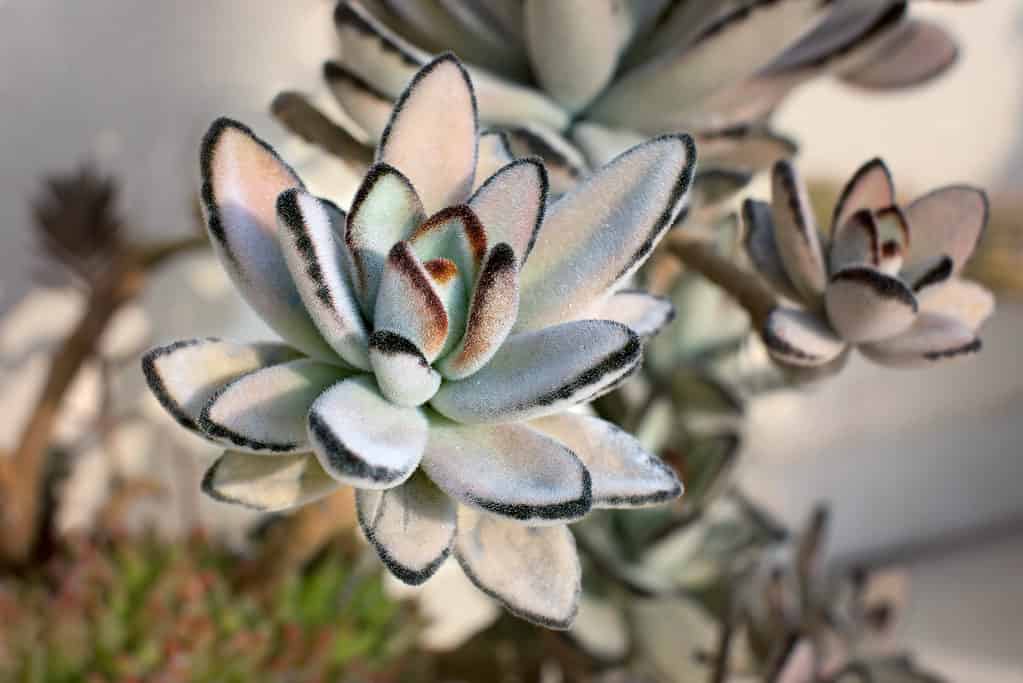
The panda plant is a fuzzy kalanchoe.
©iStock.com/TatianaMironenko
Paddles
The leaves of kalanchoes in this group resemble, you guessed it, paddles. The flapjack plant is among the most popular of the paddles.
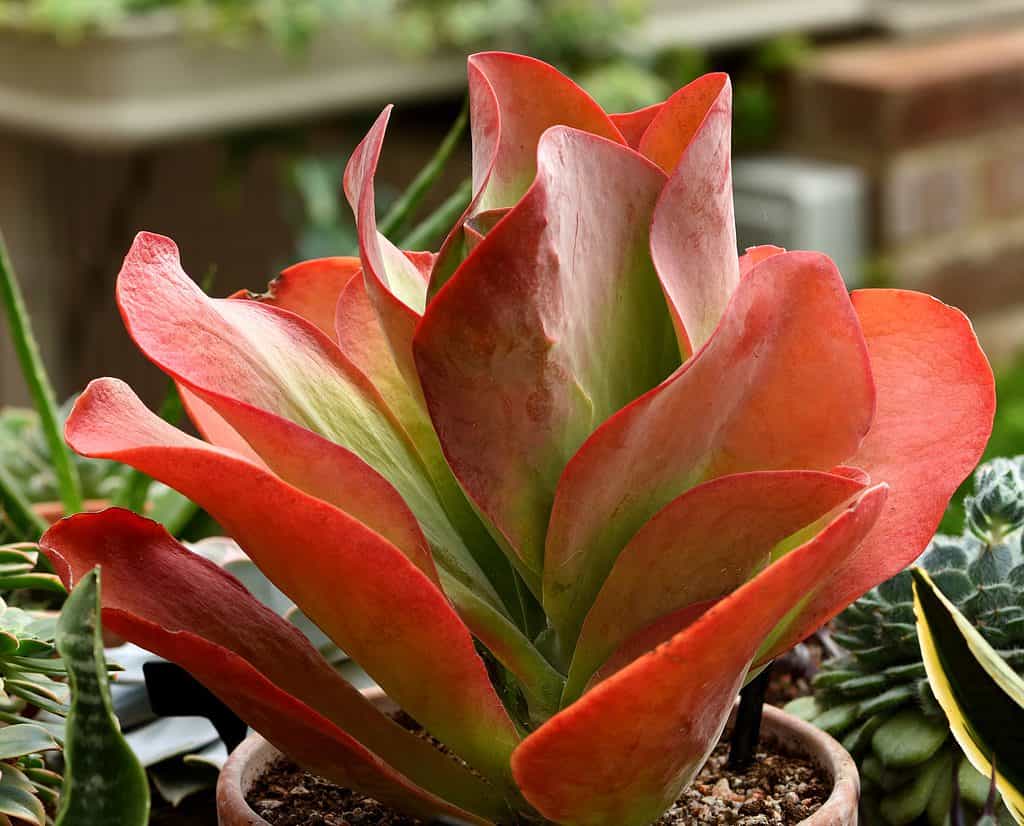
Flapjack plants have leaves that look like pancakes or paddles.
©iStock.com/MichelR45
Tropical
This group is highly sensitive to sunlight, water, and temperature. The penwiper plant is a popular tropical kalanchoe.
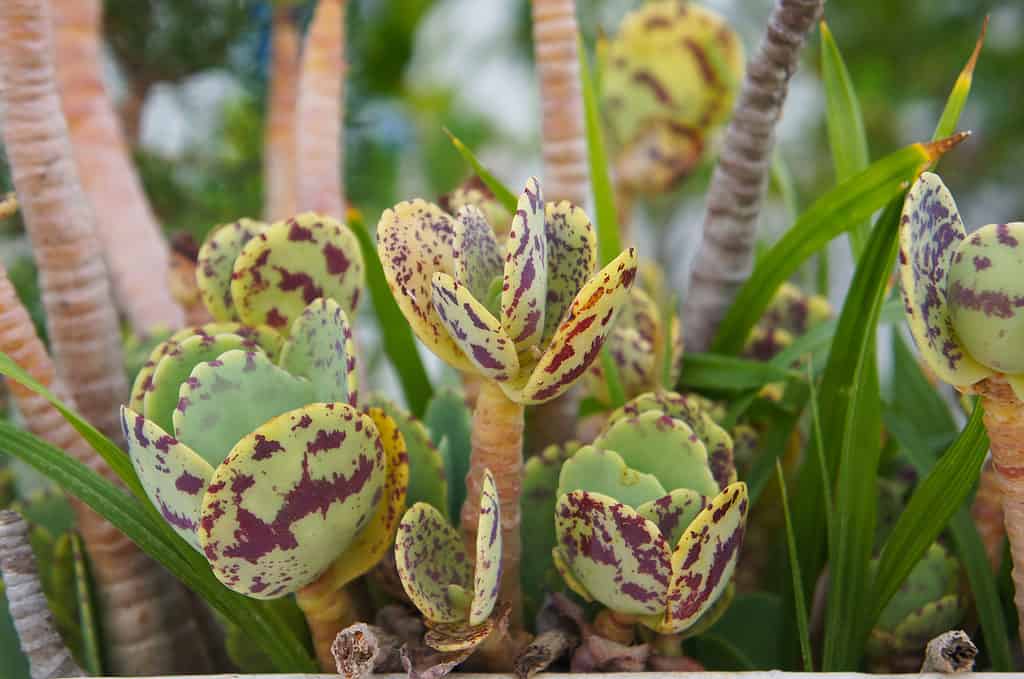
The penwiper plant has large, flat bluish-green leaves with purple spots.
©iStock.com/skymoon13
Floriferous
The most widely-known group of kalanchoes, floriferous kalanchoes produce abundant flower clusters. The Kalanchoe blossfeldiana is the most popular species of the genus. In fact, if someone simply refers to a kalanchoe, this is probably the species they’re talking about.

has bright, showy flowers.
©iStock.com/Andrey Zhuravlev
Rarities
Also known as unusual kalanchoes, this group features unusual patterns or variegated leaves. They are also rarer than most of the others because they are more difficult to raise. Pies from Heaven (Kalanchoe rhombopilosa) is included in this grouping.
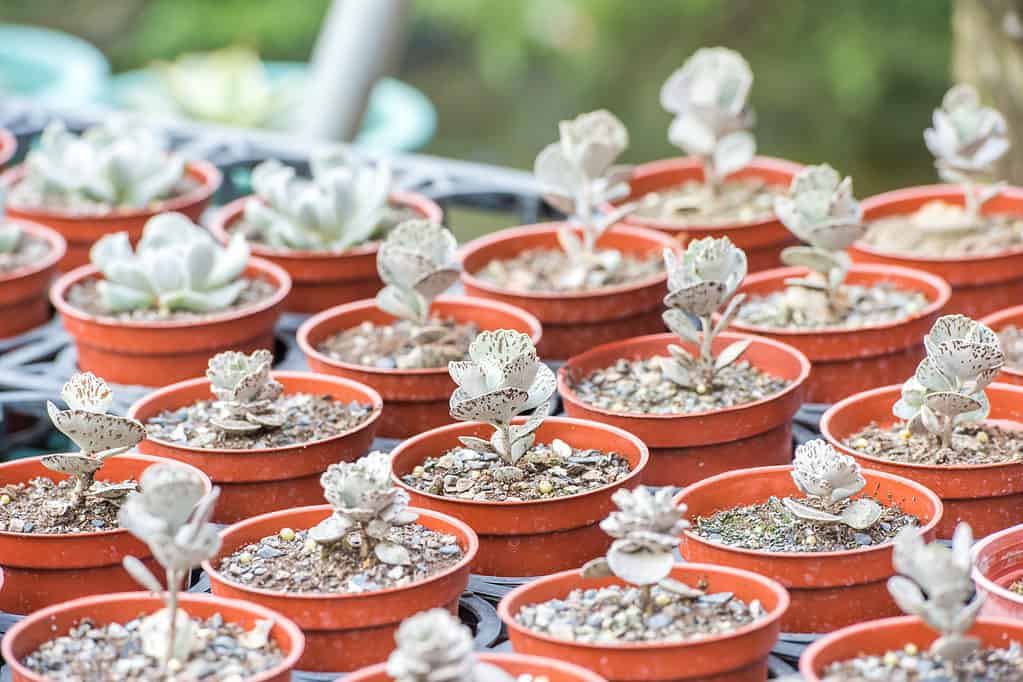
Pies from Heaven has woody stems with silvery-green leaves with brown markings.
©iStock.com/insjoy
Care
So how do you care for your kalanchoe? There is not a one-size-fits-all approach considering the number of different species, but most have the same general care requirements.
Kalanchoes are tough, hardy plants that don’t need a lot of attention in order to thrive. Here are some basic facts you need to properly care for your kalanchoe.
| Kalanchoe Facts | |
|---|---|
| Common Names | Widow’s-thrill, Flaming Katy, Mother-In-Law Plant |
| Sunlight | Partial to full sun |
| Soil | Sandy, well-drained |
| Water | Once ever 2-3 weeks |
| Indoors or Outdoors | Indoors with plenty of morning sun. Outdoors in Zones 10-12. |
Sunlight
Most kalanchoe species are native to Madagascar and Africa where they can really soak up the sun. But that doesn’t mean they don’t need a little shade from the harshest rays of the day. Direct afternoon sun can scorch the leaves.
Soil Type
When grown outdoors, place the kalanchoe in well-drained, sandy soil.
When grown indoors or in containers, pot the plant in a well-draining soil mixture. Half potting soil and half cactus mix is a good recipe. You can also mix 60 percent peat moss and 40 percent perlite. These mixes will hold down the overall moisture of the soil, helping your kalanchoe flourish.
Also, consider clay or terracotta pots, as they wick away moisture from the soil.
Water
Most kalanchoes flourish in hot, arid environments. Like many succulents, they require little water to thrive. Completely saturate the soil every 2-3 weeks. To avoid overwatering, check the soil. Hold off on watering a little longer if it’s not completely dry.
Placement
When considering plant placement, it’s important to note that kalanchoe plants are toxic to pets. Make sure your furbabies stay far away!
When growing indoors, place kalanchoe plants near an east-facing window if possible. This will allow them to soak up the softer morning sunlight. Also, give the pot a quarter turn once a week to give all sides of the plant equal sun exposure.
In outdoor settings, choose a spot where your kalanchoe will have some shade from the afternoon sun and make sure there is good soil drainage.
Hailing from Madagascar and Africa, kalanchoes are warm-weather plants with no tolerance for frost. If you live in Zone 9 or under, your kalanchoes should be planted in containers that can be brought inside when the temperature drops. In colder climates, it’s probably a better idea for your kalanchoes to be year-round houseplants.
Propagation
Kalanchoes are easy to propagate. As the plants mature, they produce offsets. Propagating these offsets is both cost-effective and beneficial to the mother plant.
Using a sharp knife or shears, remove the offset at the joint where it connects to the mother plant.
Replant the offset in the same soil type as the mother plant and follow the normal watering schedule.
Some species of kalanchoe don’t need much, if any help, in propagation. In fact, it’s almost impossible to stop them! These species include Kalanchoe daigremontiana (often known as the Mother of Thousands) and Kalanchoe delagoensis (aptly known as the Mother of Millions). These species self-propagate so rapidly that they have been labeled as invasive in some areas.
Common problems
Kalanchoes are tough plants that are resistant to most pests and problems, but there are a few to remember.
Overwatering can cause root rot, severely damaging or killing the plant. Make sure the soil is completely dry before watering.
Powdery mildew can also affect kalanchoe.
Insect pests include mealybugs and aphids. Neem oil and insecticidal soap are effective at eradicating these unwelcome insects.
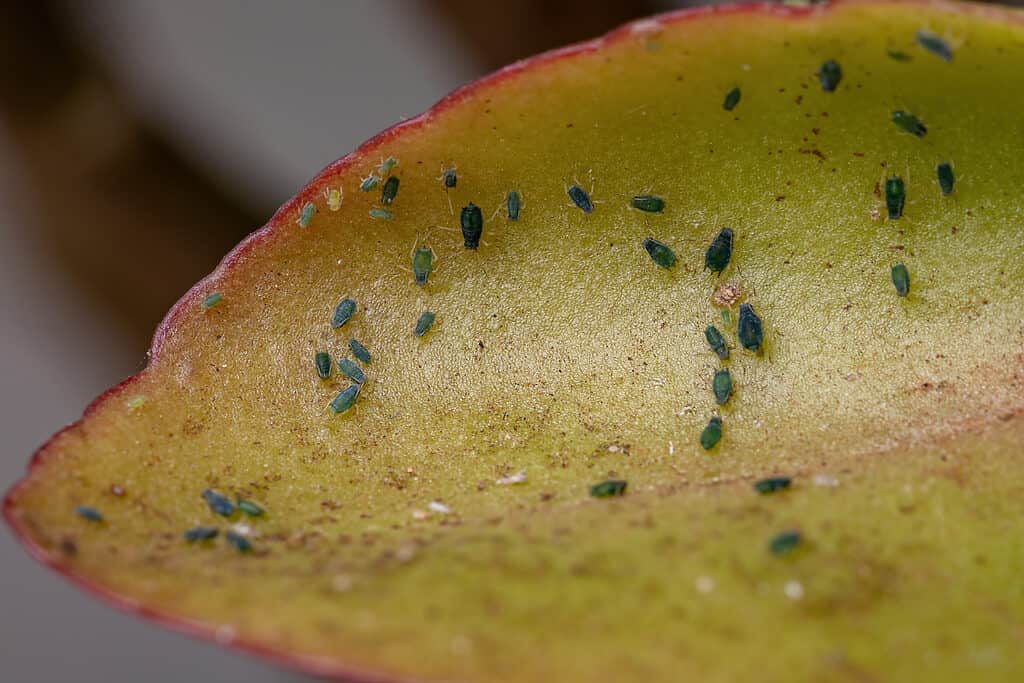
Aphids can infest the leaves of kalanchoe.
©iStock.com/ViniSouza128
Up Next:
- Elephant Bush vs Jade Plant: What Are The Differences?
- Are Succulents Poisonous To Dogs or Cats?
- The Flag of Madagascar: History, Meaning, and Symbolism
The photo featured at the top of this post is © iStock.com/Maksims Grigorjevs
Thank you for reading! Have some feedback for us? Contact the AZ Animals editorial team.






